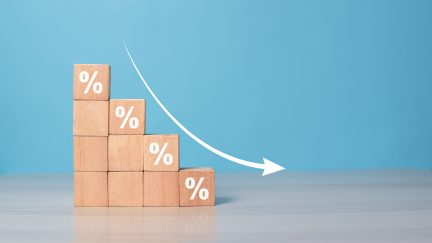For more stories like this, sign up for the PLANSPONSOR NEWSDash daily newsletter.
US, World Equities Soar in 2003: Lipper
Still, all in all, 2003 brought what mutual fund tracker Lipper describes as “mixed” news in terms of money flows for U.S.-registered mutual funds. While both stock and bond funds enjoyed positive net cash flows for the year, extremely low interest rates drove record net outflows from money market funds, and overall flows for the industry were negative in dollars, though the revenue and profitability mix was positive.
Stock Surge
Lipper notes that US open-end fund assets soared in 2003, regaining the record high set in 2001, while closed-end funds swelled to an all-time high of $176.1 billion on the back of a $32 billion gain. And little wonder – last year US equity funds rose to their best yearly performance since 1967 with a 34.72% surge that eclipsed both the gains seen at the height of the technology bubble in 1999 (+33.65%) as well as the rebound at the end of the previous recession in 1991 (+33.61%).
Moreover, of the 35 Lipper equity classifications, only the bear fund-laden Specialty Diversified Equity Funds group posted a loss, and 27 of the classifications posted gains in excess of
30%.
US Diversified Equity (USDE) Funds climbed 32.44%, the group’s best performance since 1991 (+37.65%), while the Small-Cap Growth Funds classification was best among the marcoclassification grouping, with a 44.36% gain. Meanwhile the Sector Equity Funds macro-classification hit a milestone in 2003, registering a 39.47% rise, its best showing since Lipper started tracking the group in 1960.
Fixed-income funds endured a bumpy ride in 2003. Investors flocked to them as a safe haven early in the year, only to desert them at the onset of the war; then Treasuries surged as yields tumbled to multi-decade lows, before attaining some level of stability as the year drew to a close. The US dollar’s depreciation lifted International Income Funds and Global Funds to annual returns of 15.75% and 13.46%, respectively, and provided double digit gains for the second year in a row.
Lipper notes that, starting on April 1, small-cap funds led the way for 9 of the next 11 weeks and went on to continue their dominance for the remainder of the year. By year's end, small-cap funds had garnered 44.05% in gains, the subgroup's best performance since 1991, when it returned 47.75%. In contrast, large-cap funds racked up 26.53% in gains during 2003 after negative returns the prior three years. Lipper notes that, while small-cap funds were gaining ground all year long, the late year rally was driven by large-cap stocks.
Growth funds ended 2003 up 35.05%, while value funds gained 33.45%. However, Lipper notes that, in terms of market gains, value led in mid-cap and in large-cap for the year, while growth won in multi-cap, and core won in small-caps.
Lipper notes that the weakening dollar and US trade disputes with and heightened interest in world equity funds in 2003. Overall, the World Equity Funds macroclassification soared 39.52% last year, emerging with its best yearly gain since 1999, when it gained nearly 49%, while it outperformed US diversified equity funds for the second year running.
Fund Flows
After falling for three straight years, assets in domestic equity funds surged 37.1%, some $711.7 billion, in 2003 to end near year-end 2000 levels. The $2.631 trillion in assets, though still below the $2.694 trillion asset base of 1999's year end, was nonetheless near the all-time highs. Assets invested in sector equity funds were up 39.2% from the year before. Still, the sector equity group had been the hardest hit by the decline in the stock market over the previous three years, and assets had fallen close to 30% since the end of 2000. Assets invested in world equity funds surged more than 50%, winding up with $519.4 billion in assets, compared to $511.1 billion at the end of 1999. Indeed, Lipper notes that among pure equity fund macro-classifications, the world equity group was the only one that could boast of higher assets at the end of 2003 than during the equity craze of the late 1990s.
Mixed equity or "balanced" funds also reached a 2003 year-end record of $443 billion in assets. Assets were up over 40% (nearly $29 billion), though they returned "only" about 20%, compared with a 35% gain for equity funds overall.
Fee Focus
In the middle of the mutual fund trading scandal, and the more recent focus of regulators on fees, Lipper notes that the median annual recurring expense of owning a mutual fund in the (as measured by total expense ratio or TER) declined from 1.259% in 2002 to 1.250% in
2003. Up until last year the median expense ratio had been increasing every year since 1999, though Lipper says the dollar-weighted average TER had actually been declining for the last four years straight.
Assets in US-listed ETFs grew by more than 45% during 2003, but until December, the dominant engine of that growth was valuation, rather than net cash in-flows or new product creation. Estimated net assets in ETFs at the end of December 2003 were approximately $156 billion, up from $106.1 billion at the end of 2002. Last year Lipper says it had a net gain of 165 fund classes of shares in its open-end fund database, almost three times the number of 2002, though most of the gains were seen among fixed-income funds.


